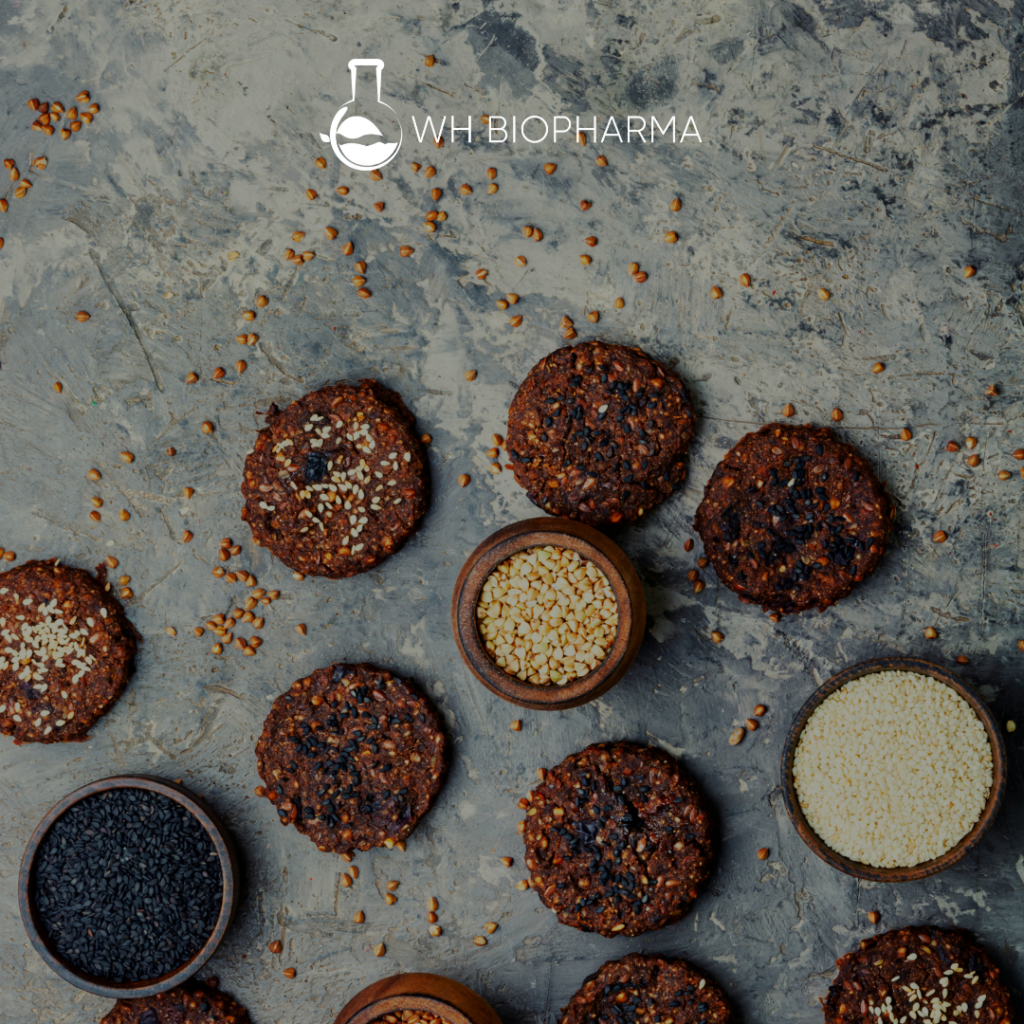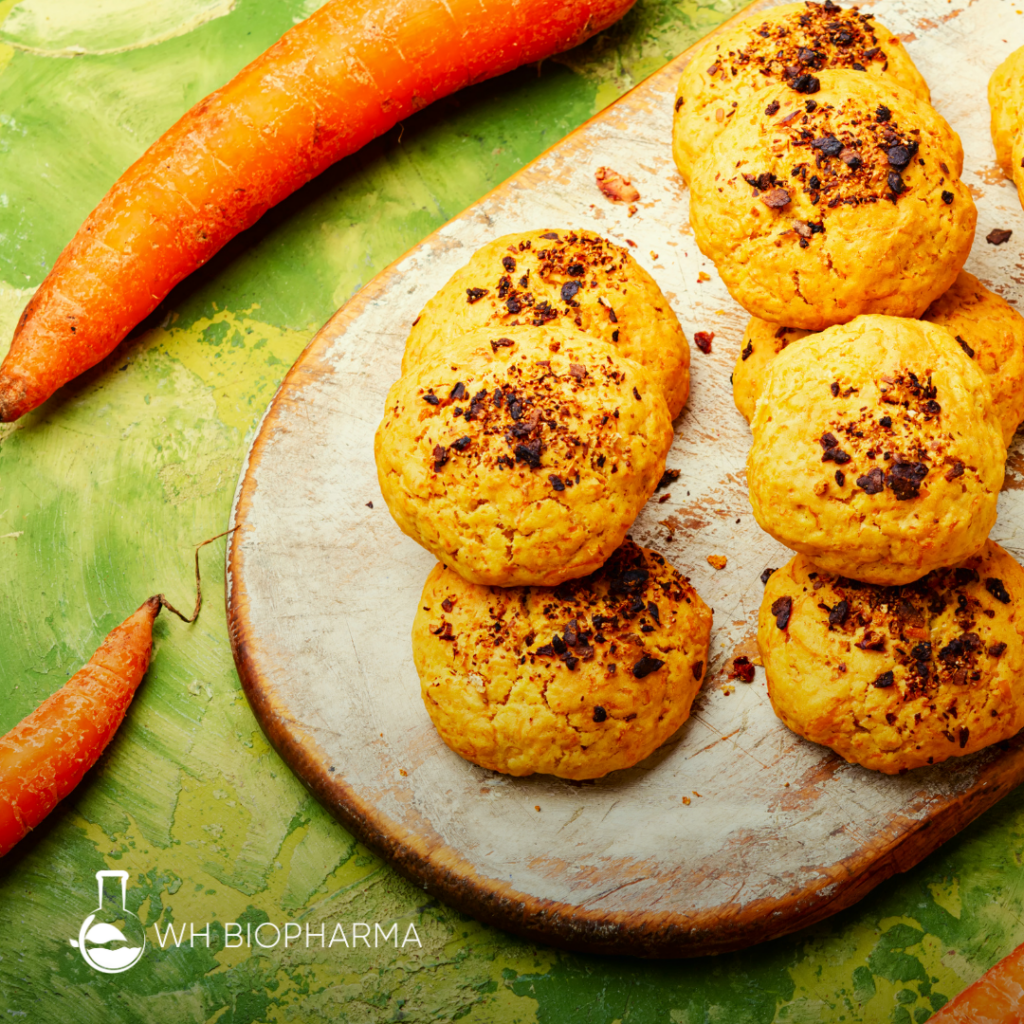Vegan protein cookies have become a popular choice for those seeking a delicious yet nutritious snack. But did you know that you can elevate their nutritional value without compromising on taste? In this comprehensive guide, we’ll explore a variety of hacks and creative ideas to make your vegan protein cookies not only more nourishing but also even more delectable. Get ready to discover how simple tweaks and innovative additions can transform your cookies into a powerhouse of flavor and health.
The Foundation – Crafting a Basic Vegan Protein Cookie
In the world of vegan protein cookies, establishing a solid foundation is key to creating delicious and nutritious treats. In this chapter, we’ll delve into the essential ingredients and techniques required to craft a basic vegan protein cookie that serves as the canvas for all your culinary creativity.
The Essential Ingredients
The Backbone of Protein Cookies: Protein powder is the star ingredient in vegan protein cookies. It not only provides the protein content but also contributes to the cookie’s texture and structure.
Choosing the Right Protein: Consider different types of plant-based protein powders like pea, hemp, rice, or a blend. Each has its unique flavor and texture, allowing you to tailor your cookies to your taste.
Binding and Texture: Flour serves as a binding agent and contributes to the texture of your cookies.
Gluten-Free Options: Explore gluten-free flours like almond, coconut, oat, or chickpea for variations that cater to dietary preferences.
Balancing Sweetness: Select sweeteners like coconut sugar, maple syrup, or agave nectar to add sweetness to your cookies while keeping them vegan-friendly.
Liquid vs. Dry Sweeteners: Consider whether to use liquid or dry sweeteners and how they impact the cookie’s consistency.
Texture and Flavor Enhancement: Fats, like coconut oil, nut butter, or avocado, add richness, moisture, and flavor to your cookies.
Healthy Fats: Opt for heart-healthy fats to ensure your cookies are both delicious and nutritious.
The Ideal Texture
Achieving the Perfect Consistency: Balancing wet and dry ingredients is crucial for achieving the desired texture of your cookies.
The Role of Binding Agents: Consider the use of flaxseed meal or chia seeds mixed with water as vegan egg substitutes for binding.
Stirring vs. Folding: Learn when to stir or fold ingredients gently to maintain the cookie’s structure.
Overmixing Concerns: Understand the potential consequences of overmixing, which can result in tough cookies.
Supercharging with Whole Foods

Whole foods are nature’s nutritional powerhouses, and they can take your basic vegan protein cookies to the next level in terms of both flavor and nutrition. In this chapter, we’ll explore how to supercharge your cookies with the goodness of whole foods.
Nut and Seed Additions
Boosting Protein and Healthy Fats: Nuts like almonds, walnuts, or seeds like chia and flaxseeds can enhance the nutritional value of your cookies.
Textural Variation: Chopped nuts and seeds add a delightful crunch and texture to your cookies, making every bite an adventure.
Exploring Flavor Profiles: Consider the flavor profiles of different nuts and seeds. For example, pistachios can add a unique nutty sweetness, while pumpkin seeds provide a savory touch.
Balancing Quantities: Experiment with various nut and seed combinations to find the perfect balance of flavors and textures.
Whole Grains for Fiber and Sustained Energy
Fiber-Rich Goodness: Whole grains like oats, quinoa, or amaranth introduce fiber into your cookies, aiding digestion and promoting a feeling of fullness.
Sustained Energy: Whole grains release energy slowly, providing a sustained source of fuel for your active lifestyle.
Texture and Flavor Exploration: Different grains offer distinct textures and flavors. Rolled oats lend a classic chewy texture, while quinoa adds a slight crunch.
Combining Grains: Mixing multiple grains in your cookie dough can create a unique and balanced flavor profile.
Seeds for Omega-3 Fatty Acids
Omega-3 Boost: Flaxseeds and chia seeds are excellent sources of omega-3 fatty acids, which are essential for heart and brain health.
Egg Replacements: Ground flaxseeds or chia seeds mixed with water can act as egg substitutes while adding nutrition and binding power to your cookies.
Balancing Amounts: Be mindful of the quantity of seeds you use to avoid overwhelming the cookie’s texture.
Proper Hydration: When using flaxseeds or chia seeds as egg replacements, ensure they are adequately hydrated for effective binding.
Incorporating nuts, seeds, and whole grains into your vegan protein cookies not only enhances their nutritional value but also introduces exciting flavors and textures. These whole foods contribute to a well-rounded, satisfying treat that can be enjoyed as both a snack and a source of sustained energy. In the next chapter, we’ll delve into another innovative approach: sneaky vegetable inclusions that add moisture and nutrients to your cookies.
Herbs and Spices for an Aromatic Touch

Herbs and spices are like the secret keys to unlocking a world of flavor in your vegan protein cookies. In this chapter, we’ll explore how you can use these aromatic ingredients to infuse your cookies with unique and delightful tastes.
Elevating Aromas with Herbs
The Essence of Earthiness: Rosemary adds a pleasant earthy aroma and a touch of pine to your cookies.
Pairings: Complement rosemary with flavors like lemon zest, almonds, or dark chocolate for a sophisticated twist.
A Subtle Floral Note: Lavender lends a floral and slightly sweet fragrance to your cookies.
Balance is Key: Use lavender sparingly, as its flavor can easily overpower. Combine it with ingredients like honey or lemon for a harmonious blend.
The Magic of Spices
The King of Spices: Cinnamon infuses warmth and depth into your cookies, evoking feelings of comfort.
Versatility: Pair cinnamon with ingredients like apples, pecans, or oats for cozy and familiar flavors.
Exotic Complexity: Cardamom adds an exotic and aromatic complexity to your cookies.
Pairing Suggestions: Combine cardamom with flavors like orange zest, pistachios, or coconut for an intriguing blend.
Balancing Flavors and Textures
Maintaining Balance: Be mindful of the quantity of herbs and spices you add. Start with small amounts and taste as you go to achieve the right balance.
Experimentation: Don’t be afraid to experiment with different herbs and spices to discover unique and delicious combinations.
Fresh Herbs: Fresh herbs like rosemary can be finely chopped and added to your cookie dough for a burst of freshness.
Dried Spices: Ground spices like cinnamon and cardamom should be evenly mixed into your dry ingredients for uniform flavor distribution.
Herbs and spices are versatile ingredients that can elevate your vegan protein cookies from ordinary to extraordinary. Their aromatic and flavorful properties can turn a simple treat into a culinary delight. In the next chapter, we’ll explore another dimension of flavor enhancement: the addition of citrus zest and extracts for a zingy twist.
Vegan protein cookies can be more than just a tasty snack; they can be a canvas for culinary creativity and nutritional excellence. By implementing these hacks and innovative ideas, you can elevate your cookies to new heights, making them a delightful and guilt-free indulgence. Whether you’re a seasoned baker or just starting out, these techniques will empower you to craft cookies that not only satisfy your cravings but also provide a boost of health and flavor in every bite.





